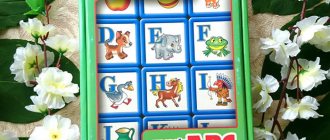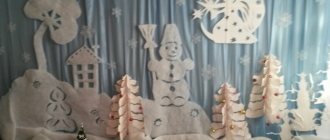Description
The Christmas tree is a slender tree that can grow up to 35 meters high. During the first 10 years it grows very slowly - a few cm per year, then the growth rate increases, but after 100-120 years it slows down again. It has a pyramidal (triangular) crown with a sharp tip. The branches are densely located throughout the trunk. It is often difficult to see behind the spruce feet.
In a young tree, the bark is smooth, gray-brown in color; in an old tree, the bark becomes gray and peels off in thin plates. The needles are dark green and shiny, sharp and prickly. The needles are much shorter than those of pine, up to 3 cm long.
They stay firmly on the branches for 7-10 years. But in urban conditions, with heavy smoke in the air, the lifespan of needles is greatly reduced: they fall off after only 3 years.
The spruce root system is located close to the surface, so strong winds can knock down the tree.
Spruce is a long-liver, it lives 250-300 years.
image of Eli
Since childhood, at Christmas and New Year, people have become accustomed to smelling fir branches.
Mixing with the smell of tangerines, this fragrant pine aroma was a harbinger of a miracle, gifts, new experiences and the New Year. For many centuries, Spruce has personified the symbol of a new cycle. In ancient times, remaining evergreen, Spruce was an allegory of eternal youth and immortality, longevity and fidelity.
For the same reasons, the Spruce “spruce branches” were and remain in many villages a sign of a bygone life. During the funeral procession, “spruce branches” are thrown at the feet, saying goodbye to the departed. Their age has ended, but has passed into eternity.
In Scandinavia, spruce was used for ritual bonfires. The resinous firewood gave the fire unique strength.
Where does it grow
It grows throughout the Northern Hemisphere. It can be found in North America, Central and Northern Europe. It is widespread in Russia: in Siberia, the Urals, the Far East, the Caucasus, and in the steppe zone. Also grows in China and Japan.
50 types of in total . The most common: Siberian, European, Caucasian, Canadian, white, red, black.
The Christmas tree is the basis of the taiga. It grows in mixed forests, coexisting well with larch, pine, Siberian cedar, fir, oak, linden, birch, aspen, and hazel. It also forms pure spruce forests, which have a number of features:
- It's damp and dark here;
- the soil is completely covered with moss;
- under the spruce paws grow dense thickets of blueberries, lingonberries, wood sorrel, ferns, and cuckoo flax.
Medicinal properties of Spruce
Fir cones, pine needles and resin are used for medicinal purposes.
The needles contain bactericidal substances, amino acids, chlorophyll, vitamins and phytoncides. Spruce needles are rich in vitamin C, the concentration of which increases in winter, therefore, since ancient times, pine “tea” has been an excellent remedy for scurvy and at the same time strengthened the entire body.
Daily consumption of 3–4 spruce needles for a month can restore immunity and increase resistance to a number of viral diseases.
Several spruce branches placed in a vase in a room can kill harmful bacteria in the room, leaving a pleasant aroma in the air.
Fir cones are rich in tannins and essential oils. They also contain copper, manganese, aluminum, and iron.
Essential oils are used in the fight against acute respiratory infections and diseases of the upper respiratory tract.
Syrup from the buds of Spruce is prescribed for microinfarctions.
A decoction of pine needles is used by inhalation to treat sore throat and sinusitis.
Spruce resin or resin has antiseptic properties and can be used in ointments to heal wounds and ulcers.
Growing conditions and reproduction
For a spruce to grow well, it needs the following conditions:
- Shadow. This tree does not really like the sun; young trees often get sunburned in open areas.
- Sufficient hydration. The Christmas tree does not tolerate drought well.
- Temperate climate. The tree is cold-resistant, not afraid of frost, but it does not grow well in the southern regions, where summers are too hot and long,
- The soil should not be too dense, but moderately fertile.
Spruce is a monoecious plant. This means that male spikelets and female cones grow on the same tree. Propagated by seeds, the germination rate of which is very good. The cones open in late November - early December, the seeds fall out, are picked up by the wind and carried far around the surrounding area.
In early spring, the seed awakens and begins to grow. The main condition for the sprouts to take root and begin to develop well is a warm spring, because they die during spring frosts.
Information for younger schoolchildren. Theme: Spruce
The spruce genus includes 45 species growing all over the world. There are spruce trees with bluish, bluish-white and golden-yellow needles. The trunks of some spruce trees reach 2 m in diameter, and the height of the trees is 40-50 m.
Spruce lives up to 500 years. Forms a slender crown pyramid with raised branches at the ends. The trunk is large, straight, covered with reddish-brown scaly bark. The needles are prickly, tetrahedral, sharp.
Spruce cones are narrow and long. At the end of winter they open and seeds fly out. The winged seeds are picked up by the wind and carried far from their native tree. Young tender Christmas trees grow from the seeds. In an open field they can freeze. And under the protection of mature trees, they are not afraid of frost.
An adult spruce becomes the mistress of the forest. Neither pine nor birch can live in its shadow. Only moss and rare herbs with white flowers grow in the spruce forest. In the dusk, insects quickly notice the white flower. Apart from them, there is no one to pollinate the flowers. The wind could, but it doesn’t happen in the spruce forest.
Spruce is considered evergreen. But its needles do not last forever. The needles fall off every 7-9 years. In autumn, the spruce sheds at least a seventh of its needles, gradually changing its appearance.
The wood is used to make paper, furniture, and for construction and sawing timber. Resonant spruce (spruce grown in the mountains) is used to make musical instruments. Spruce produces resin, which contains rosin and turpentine.
The ancient inhabitants of Germany believed that the spirit of the forest lived in spruce, protecting plants, animals and birds. They believed that spruce could cope with evil forces, since its branches were covered in needles.
It’s hard to imagine a New Year’s holiday without a Christmas tree. The spruce came to Russia as a New Year's tree according to the decree of Peter I “On the celebration of the New Year” dated December 20, 1699. Samples of branches were exhibited in Gostiny Dvor. “Fiery fun” was scheduled on Red Square; it was ordered to fire cannons and muskets and launch rockets.
Spruce is a coniferous evergreen tree of the pine family. This is a riddle about her: “In winter and summer, the same color.” The message will take a closer look at this interesting tree, tell you where it grows and how it is used in the national economy.
Use in the national economy
Spruce plantations can often be seen in sanatoriums. Because their needles release phytoncides that clean and disinfect the air. Also, spruce often becomes the basis of landscapes in personal plots.
High-quality musical instruments are made from this wood. Soft wood is used to make paper, rayon, and smokeless gunpowder. Resin, tar, rosin, and turpentine are obtained.
Fir cones are widely used in folk medicine. Healers believe that a Christmas tree is a donor tree; if you lean against it and stand there for a few minutes, it will give a person energy and strength.
the forest guest for the New Year.
How much joy it brings, filling the house with a special forest smell and pleasing the eye with its beauty!
If this message was useful to you, I would be glad to see you in the VKontakte group. Also, thank you if you click on one of the “like” buttons:
Popular message topics
- Profession dentist
A dentist has always been an indispensable doctor, especially in modern society, when beauty and aesthetics come to the fore. This is a doctor who treats the maxillofacial area. When diseases occur in the oral cavity, a dentist comes to the rescue. - Zhukovsky, the life and work
of Vasily Andreevich can be called one of the most important poets of the 18th century. Having studied the works of Western educators, he wrote wonderful things in which faith in bright times for the people was visible, in the fact that they could be - City of Saransk
The city of Saransk is the capital of the Republic of Mordovia, which is part of the Volga Federal District. 1641 is considered the year of the founding of the city, which at that time was a fortress. The city has gone through stages of development from a defensive fortress,
What coniferous trees are bought for the New Year?
Spruce is an indispensable attribute of the New Year's holiday.
New Year's holidays cannot be imagined without fragrant spruce, pine or fir. They decorate apartments with their presence and look great under the snow caps in large parks and squares.
Some people prefer spruce because of its low price and fragrant resin aroma. The cone-shaped crown of a tree with thick branches looks bright and festive when dressed up.
In a warm room, spruce quickly loses its fresh appearance and smell. The needles quickly begin to dry out and turn yellow. To somehow refresh the plant, you need to constantly spray and water it.
Pine is considered more resistant to home heat, but its price is higher. But for those who are attracted by the rich antimicrobial aroma, this conifer is just right. Pine is not as thick as spruce, but its needles are long and strong, so you can hang toys on them without fear. Its negative side is the release of sticky, difficult to wash off resin.
Fir will last the longest without losing its freshness. Due to the soft, non-thorny needles, dressing it up is a pleasure. The downside is the lack of pine smell and the high price.
Yew
The leaves of this species are hard, linear or lanceolate, with narrow or wide needles. For the most part, trees remain green all year round, but there are, although very rarely, species that lose leaves in winter.
Interesting fact : yew needles are dangerous for animals, as they cause poisoning.
Yew berry
Yew berry
A very elegant evergreen plant, sometimes reaching 40 m in height, has healing properties. At the same time, it is poisonous. It grows slowly, but its life expectancy is high - several thousand years. A lush, dense bush in shape resembles a cylinder or pyramid. The bark is smooth, red-gray. Flat dark green needles 20-35 mm long are arranged in a spiral. The strong branched root allows the yew to grow in any type of soil. It reproduces by seeds, which are spread by birds eating the berries of the bush.
Torreya
Torrey
The genus of the yew family is named after the American flora researcher John Torrey. It is a small tree, usually 5-20 m in height. The spiral-shaped needles are rigid, with pointed ends. The plant can be either monoecious or dioecious. Female cones mature in a year and a half. The only large seed looks like a nut.
The needles, stems, and cones emit a very unpleasant aroma. The range of torrea is East Asia and North America.






